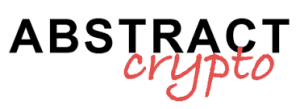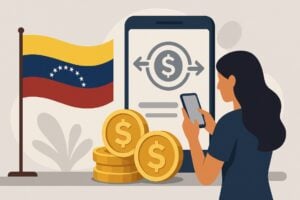Amidst a persistent inflation and the devaluation of the bolívar, a growing number of Venezuelans are relying on stablecoin in dollars to pay, save, and send money.
In 2023, crypto remittances to the country reached about 461 million dollars, accounting for nearly 9% of total transfers, as highlighted in a report by Chainalysis.
An interesting aspect is that the trend seems to be consolidating, driven by the daily use of wallets and payment apps and, in part, by the search for faster and more predictable solutions compared to traditional channels.
According to the data collected from interviews with wallet operators, local exchangers, and merchants conducted throughout 2023, most of the flows in stablecoin concern family transfers and informal retail payments.
Industry analysts observe that adoption is more pronounced in urban areas (Caracas, Maracaibo) where the penetration of smartphones and digital services is greater, while rural areas lag behind due to connectivity and financial access limitations.
The numbers cited are consistent with public reports updated to 2024 and with the main regional macroeconomic indicators.
Inflation and devaluation: why Venezuelans are switching to digital currencies
The erosion of purchasing power is pushing families and businesses to seek refuge in currencies pegged to the dollar. The stablecoin reduce exposure to the volatility of the bolívar and simplify transfers between relatives abroad and beneficiaries at home.
In this context, a form of informal dollarization is observed, manifesting through wallets and digital platforms, within a regulatory framework still in the process of being defined (Chainalysis).
It should be noted that operational use also depends on people’s ability to access adequate devices and connectivity, factors that are not always uniform across the territory.
The numbers that matter: regional adoption and remittance flows
Venezuela fits into a Latin American landscape in constant growth in the use of crypto for payments and remittances, as reported by Chainalysis. Supporting this framework, international organizations report record levels of inflation and a macroeconomic fragility that is reflected in household budgets and spending planning.
In summary, the pressure on prices and the depreciation of the local currency create the conditions to experiment with more stable digital instruments.
- Crypto remittances: about 461 million dollars in 2023, equivalent to almost 9% of the total transfers destined for Venezuela (source: Chainalysis).
- Inflation: levels among the highest in the world, as confirmed by the IMF; the price dynamic remains a critical variable in a context of instability.
- Total remittances: the flows to Venezuela continue to grow following the pandemic; for updated comparative data see KNOMAD/World Bank.
Stablecoin in practice: payments, savings, fast remittances
The stablecoins in USD (such as USDT, USDC) are adopted for multiple uses:
- Pay for goods and services at businesses that accept digital payments via wallet or QR codes.
- Receive remittances from abroad in a few hours, with significantly lower costs compared to traditional channels.
- Protect savings from devaluation, maintaining value in digital dollars.
Practically, a family member sends USDT from Europe or the USA; the recipient uses them via app or converts them into cash at local operators. The entire flow occurs within the day, with low fees and fewer losses from intermediate conversions.
In this context, the ease of use of wallets affects the choice: the more straightforward the experience, the more adoption spreads, albeit with differences between expert users and newcomers.
Where cryptos circulate: shops, P2P markets, occasionally salaries
In Caracas and in the main cities, more and more esercenti offer payment options in crypto or in digital dollars. There are also numerous peer‑to‑peer transfers for informal purchases.
It should be noted that, in certain sectors such as tech and freelance work, compensations and paghe are occasionally paid in stablecoins, although these remain sporadic practices and not the market norm. Even universities and private centers have introduced courses on blockchain and digital assets, thus responding to the growing demand for such skills and an interest that, although uneven, appears to be rooted.
Concrete obstacles: connectivity, access to banks, sanctions
The adoption of stablecoins presents numerous challenges and operational and regulatory issues.
- Unstable connectivity: the quality of the Internet connection varies significantly between urban and peripheral areas, compromising digital payments.
- Limited financial access: although the use of wallets can bridge some banking gaps, KYC/AML procedures can be complex and costly for informal users.
- Sanctions and compliance: some exchanges and services have reduced functionalities for Venezuelan users, increasing conversion costs and limiting operational possibilities.
- Regulatory uncertainty: institutional reorganizations and previous state initiatives in the crypto sector have created a regulatory context that is still not well-defined.
Main risks (and how to mitigate them)
- Security of wallets: risks of phishing and theft of digital keys. The solution lies in enabling two-factor authentication, using non-custodial wallets, and maintaining offline backups. In this sense, user education really makes a difference.
- Volatility: if unpegged tokens are used, the risk of fluctuations can affect the value. It is advisable to prefer transparent stablecoins and verify reserve policies, with periodic checks on the conditions of the issuers.
- P2P Frauds: transactions without intermediaries can prove to be risky. Using escrow tools and platforms with established reputation and KYC verifications is essential, especially when the tickets are high.
- Operational blocks: sudden restrictions of services can compromise operations. Having alternative options in terms of wallets and exchanges, as well as emergency cash liquidity, is a prudent strategy.
Impact on consumption: the “double cash register” between bolívar and digital dollar
Many Venezuelan families manage a double cash register: they use the bolívar for daily expenses and resort to digital USD for saving and receiving remittances.
This division allows for greater cost predictability and supports planned purchases, but it also highlights the gap between those who have access to digital tools and those who remain on the sidelines. Not everyone, in fact, has the same conversion channels or the same ease in obtaining liquidity.
Future prospects: towards normalization or fragmentation?
The growth of digital currencies in payments will depend on various factors such as macroeconomic stability, the improvement of digital infrastructures, and the adoption of clear rules.
If compliant channels for remittances and retail payments are defined, stablecoins may integrate more into official circuits; otherwise, there will be fragmented use, with parallel ecosystems and variable costs for users.
Ultimately, the direction will depend on the balance between innovation, consumer protection, and the sustainability of the regulatory framework.
The point
- Driving factor: high inflation and the loss of confidence in the bolívar drive the adoption of crypto.
- Prevalent use: USD stablecoins are used for remittances, payments, and savings.
- Critical node: regulatory uncertainty and operational limitations due to sanctions restrict the available options.
- Opportunity: an improvement in connectivity and in the offering of consumer protections could promote greater financial inclusion.
Conclusions
Venezuela demonstrates a pragmatic adoption of digital currencies: stablecoin are gaining ground in daily payments and remittances, showing clear advantages in terms of costs and speed.
However, challenges related to regulation, security, and access persist, which, if not addressed with structural interventions, could keep the payment system in a state of hybridization and fragmentation.
In this context, continuous monitoring of data and policies remains an essential element to understand the evolution of adoption.
Note: some indicators (Internet penetration by area, final annual inflation 2023, and updated estimates on crypto remittances) require confirmation with the most recent datasets; it is recommended to update the data as soon as new releases from IMF, BCV, or World Bank are available.


